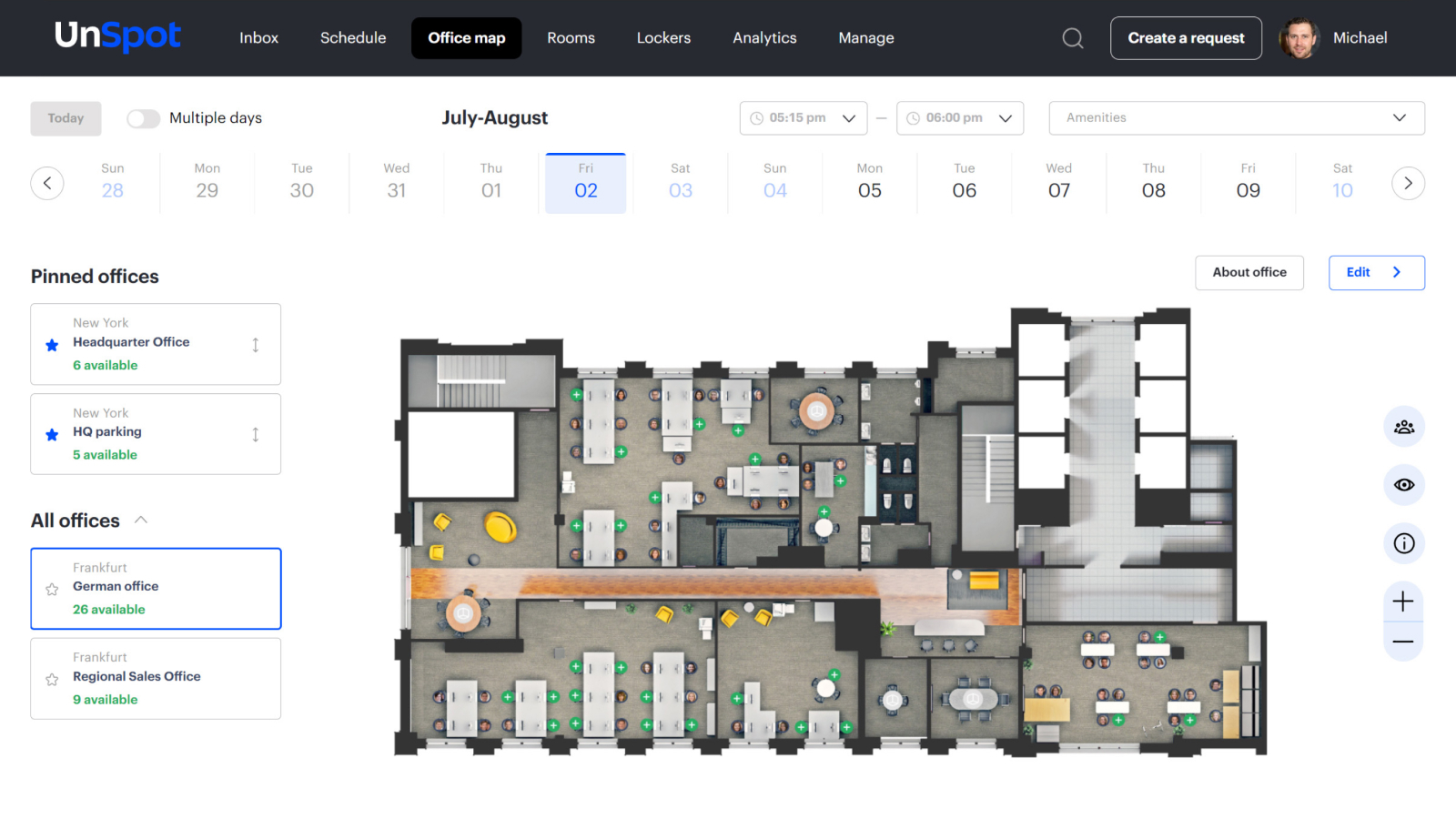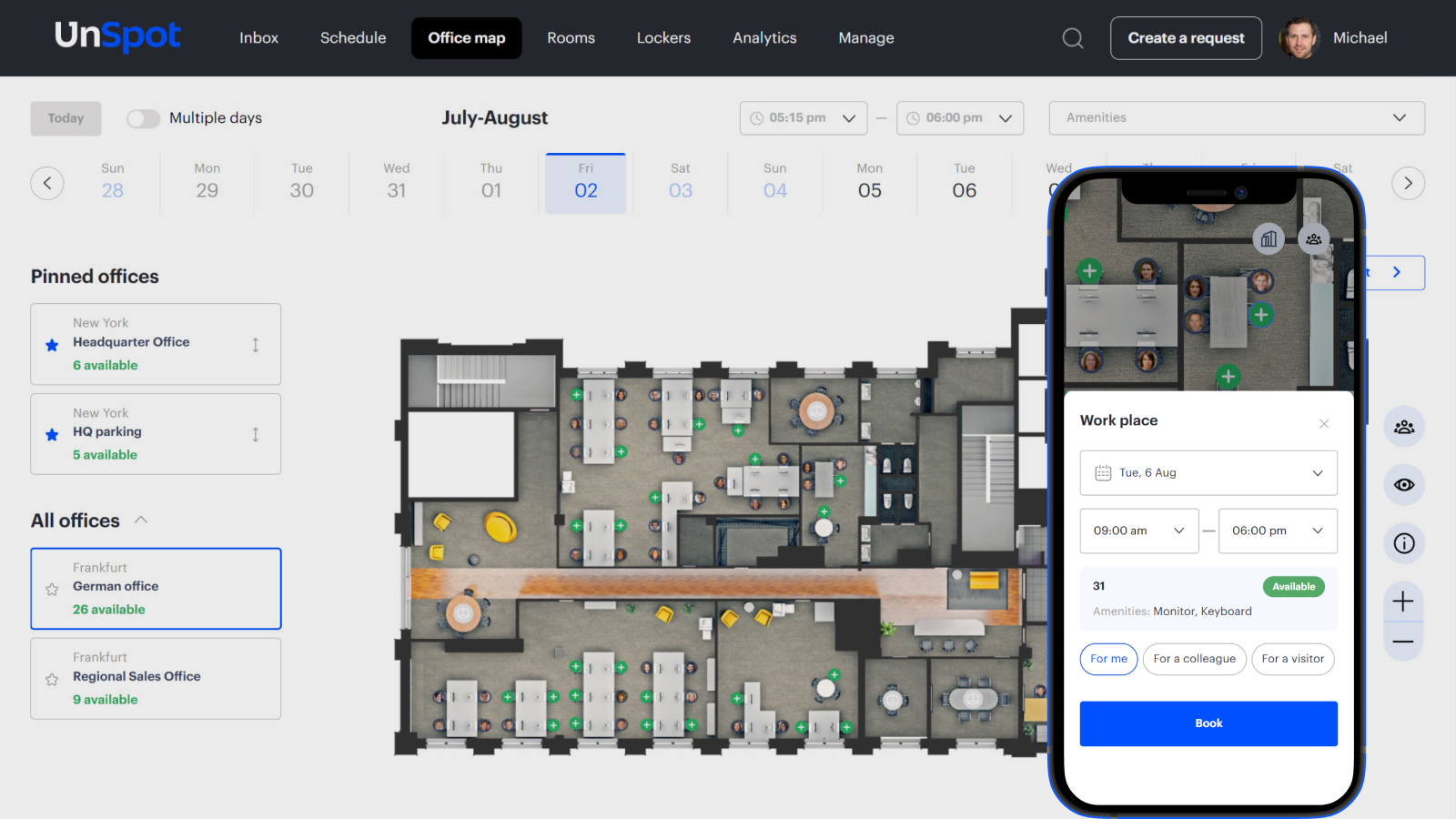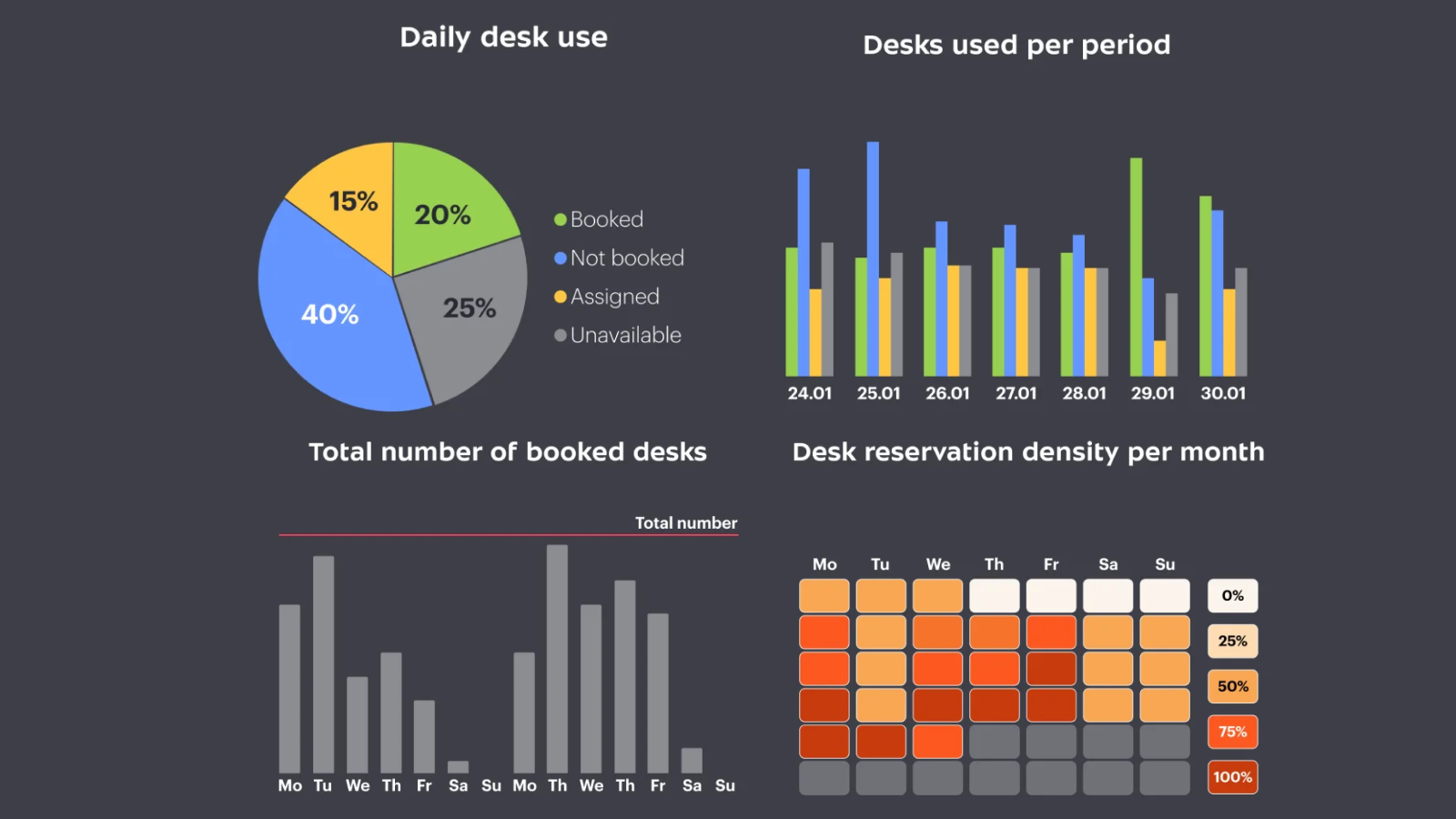Key Takeaways
- Enhanced Productivity: Align work settings with tasks to improve efficiency and quality.
- Mutual Flexibility: Employees achieve better work-life balance, while organizations access a wider talent pool and reduce costs.
- Strategic Implementation: Successful transition requires careful planning, the right tools, and continuous optimization.
- Future-Proofing: Adopting emerging technologies and adaptable work setups ensures long-term success in the hybrid work landscape.
Hybrid remote work has become the leading work model in 2025, integrating a remote workforce with in-office presence. Research shows that 73% of employees and 78% of business leaders seek stronger reasons to work in the office beyond company expectations.
According to experts, organizations that respond to this demand by implementing more flexible hybrid work approaches, rather than rigid office requirements, will attract the best specialists in the market. Understanding remote and hybrid work dynamics is essential for maintaining productivity and fostering a positive work environment.
This article explains what hybrid remote means, its benefits and challenges, and provides strategies for successful implementation, offering valuable insights for employers optimizing hybrid-remote work policies and employees seeking better work-life balance.
Understanding Hybrid Remote Work Model
What Does Hybrid Work Mean?
Hybrid remote work definition: Hybrid work is a model where employees split time between in-office and remote work, boosting productivity and collaboration. Understanding hybrid remote model is key to managing remote employees. This flexible model offers various work options, allowing teams to choose the best environment for tasks. For example, an employee may work in the office for team meetings and remotely for individual tasks.
Owl Labs' 2024 report shows hybrid and remote work trends are growing, with in-office work decreasing by six percent from 2023.
Types of Hybrid Work Models
There are three primary hybrid work formats, each catering to different organizational needs:
- Office-First Hybrid: The office is the main workspace, with occasional remote work.
- Flexible Hybrid: Employees choose their work location based on tasks and preferences, needing only a few days in the office.
- Remote-First: Virtual collaboration is prioritized, with the office serving as a space for specific activities.
Each model creates unique workplace dynamics. For example, a marketing team may use the office for creative brainstorming and work remotely on other days. A software development team might meet in person for project milestones and work virtually for other tasks.
What is the Difference Between Remote and Hybrid Remote Work Schedule?
Remote work means performing duties outside the office using digital communication. In contrast, hybrid remote work combines remote work and in-office work, enabling both virtual and physical interactions. The key difference is the flexibility and balance between these environments.
Think of fully remote work as having only a home office, while hybrid work offers both a home and traditional office, letting employees choose the best place for each task and the days they work.
Benefits of Hybrid Remote Work
Advantages for Businesses and Employees
- Talent Retention: Gain a competitive advantage in the labor market, as many talented specialists now prefer alternatives to full-time office work.
- Cost Savings: Reducing office space helps cut rent, utilities, and other overhead expenses.
- Productivity: Choose the best environment for each task.
- Work-Life Balance: Allowing employees to work from home reduces commuting and supports mental health.
According to Flex Index’s 2024 report, full-time in-office work decreased from 35% to 31%. Hybrid work adoption rose from 20% to 37%. U.S. Career Institute's 2024 study shows significant savings for companies and remote workers. Offering hybrid work is essential for attracting and retaining talent.
Why Hybrid Work Models Improve Productivity
Hybrid model boosts productivity by aligning work settings with individual and task-specific needs:
- Optimal Work Scheduling: Remote team members can work during their peak performance times, whether early morning or late evening.
- Reduced Distractions: Employees who choose to work from home minimize common office interruptions, allowing for focused work periods.
- Balanced Collaboration and Focus: Employees can engage in meaningful in-person collaborations while having dedicated time for independent tasks.
Challenges of Hybrid Remote Work
Top Challenges of Hybrid Work
85% of leaders report that shift to hybrid work has feel insecure about the productivity of remote participants. Among the challenges of remote work are:
- Communication Gaps: The gap between remote and in-office teams can result in differing information flows, leading to misunderstandings.
- Maintaining Company Culture: Ensuring a cohesive culture when half of the employees work remotely can be difficult.
- Performance Evaluation: Fairly assessing employee performance without bias towards physical presence.
- Technology Integration: Ensuring all team members have access to the necessary tools and infrastructure.
Solutions for Overcoming Hybrid Work Challenges
To address hybrid work challenges, organizations can:
- Implement "virtual first" meetings for equal participation.
- Document chats digitally; schedule across time zones.
- Use outcome-based metrics.
- Invest in digital tools for seamless collaboration.

Challenges & Solutions:
| Challenge | Solution | Example |
| Communication Gaps | Virtual-First Meetings | Everyone participates online, even from the office |
| Cultural Disconnect | Online Team Events | Monthly virtual team-building activities |
| Unequal Information Flow | Centralized Documentation | Shared real-time notes in a collaborative workspace |
| Team Cohesion Issues | Blended Social Activities | Mix of in-person and virtual celebrations |
| Performance Bias | Output-Based Metrics | Evaluation based on results, not physical presence |
These strategies promote equity and effective teamwork in hybrid work.
How to Successfully Transition to Hybrid Remote Work
Key Steps for a Successful Transition
- Assessment & Planning
- Survey employee preferences
- Evaluate technology and workspace needs
- Survey employee preferences
- Policy Development
- Define work schedules
- Set communication protocols
- Establish performance metrics
- Define work schedules
- Infrastructure Setup
- Redesign office layout
- Implement collaboration tools and security
- Redesign office layout
- Training & Support
- Train managers
- Orient employees
- Provide technical support
- Train managers
- Launch & Optimize
- Roll out in phases
- Collect feedback
- Continuously improve processes
- Roll out in phases
Transitioning to a comprehensive hybrid work environment involves assessing needs, developing policies, setting up technology, providing training, and launching with ongoing optimization to enhance flexibility, productivity, and satisfaction.
Tools and Technology for Hybrid Work
According to Owl Labs’ 2024 report, 72% of workers lost time due to technical issues, 70% struggled with video visibility, and another 70% faced hearing problems. Additionally, 87% consider good technology crucial for work, up from 83% in 2023.
Key Tools for Effective Hybrid and Remote Work Arrangements:
- Project Management: Asana, Monday.com track progress and manage tasks.
- Communication: Slack enables instant messaging and organized discussions.
- Video Conferencing: Zoom facilitates face-to-face remote interactions.
- Digital Whiteboarding: Miro supports collaborative brainstorming.
- Cloud Sharing: Google Drive allows access to documents from any location.

These tools create a digital work environment that supports both in-office and remote work, enhancing productivity and job satisfaction.
Tips for Managing a Hybrid Remote Team
Best Practices for Hybrid Workplaces
- Set Clear Expectations
- Define standard working hours.
- Schedule specific days for collaboration and teamwork.
- Establish clear protocols for availability and communication.
- Focus on Performance
- Use measurable, outcome-based performance metrics.
- Conduct regular one-on-one check-ins to assess progress.
- Ensure fair evaluation standards for all employees, regardless of their location.
- Strengthen Team Connections
- Host weekly team meetings to share updates and foster collaboration.
- Arrange informal virtual gatherings, like "coffee chats," to build rapport.
- Plan hybrid events that include both in-person and virtual participation.
- Provide Individual Support
- Offer flexible work schedules to accommodate personal needs.
- Develop tailored professional growth plans for employees.
- Create regular feedback opportunities to address concerns and support development.
These pillars ensure productivity, strong team bonds, and employee satisfaction in going hybrid.
Creating an Equitable Hybrid Office
To foster fairness and inclusivity in a hybrid workplace, it's crucial to provide balanced support for both in-office and remote employees:
- Physical Workspace
- Equip remote workers with ergonomic furniture and high-quality office setups.
- Offer technology stipends to cover equipment and connectivity needs.
- Professional Development
- Provide access to online learning platforms and resources for skill development.
- Establish virtual mentorship programs to encourage career growth.
- Offer opportunities for digital certifications to enhance employee expertise.
- Well-being Support
- Launch wellness initiatives that are accessible remotely, including mental health resources.
- Provide virtual fitness programs and other activities to promote physical health.
- Ensure employees have tools to maintain a healthy work-life balance.
- Social Connection
- Organize hybrid events that bring together both in-office and remote team members.
- Host virtual team-building activities like "coffee roulette" to strengthen relationships.
- Celebrate milestones with inclusive hybrid celebrations for all employees.
Case Studies: Companies Pioneering the Hybrid Work Transition
Leading organizations like Microsoft and HubSpot exemplify successful hybrid work strategies:
Microsoft
Microsoft enhances its Teams platform with advanced collaboration tools to keep remote and in-office employees connected and productive. The company prioritizes flexibility and employee well-being by offering remote work options and implementing the Hybrid Workplace Dial, which adjusts operations based on local health data. By emphasizing technology, diversity, and inclusion, Microsoft has significantly improved employee satisfaction and retention.
HubSpot
HubSpot places strong emphasis on fostering meaningful connections within its hybrid work policies. According to their 2023 report, 52% of employees value strong relationships with colleagues more than salary. To address this, HubSpot organizes team-building activities and initiatives like "Bring Your Family to Work Day," which enhance company culture and engagement. By promoting flexibility and meaningful interactions, HubSpot achieves high employee retention rates and delivers better customer experiences.
These examples underline the critical role of customization and adaptability in creating effective hybrid work models.
Future Trends in Hybrid and Remote Work
The future of work is shaped by technology advancements and evolving workplace expectations:
Augmented Reality Platforms: Immersive virtual office spaces enable remote colleagues to collaborate as if they’re physically present.
Flexible Work Arrangements: Policies like four-day workweeks and "work from anywhere" allow employees to choose their work environment, switching between home, office, or global locations while managing their own schedules.
Smart Office Spaces: Offices equipped with biometric wellness monitoring, personalized productivity algorithms, and adaptive environments designed to meet individual preferences.

These trends indicate a move towards more sophisticated and personalized work settings, where employees can enjoy the benefits of working from home, while enhancing both productivity and well-being.
Conclusion
Hybrid remote work is transforming the workplace by providing a flexible and efficient model that benefits both organizations and employees. By allowing choices between in-person and remote work, businesses can boost productivity and create a positive work atmosphere.







